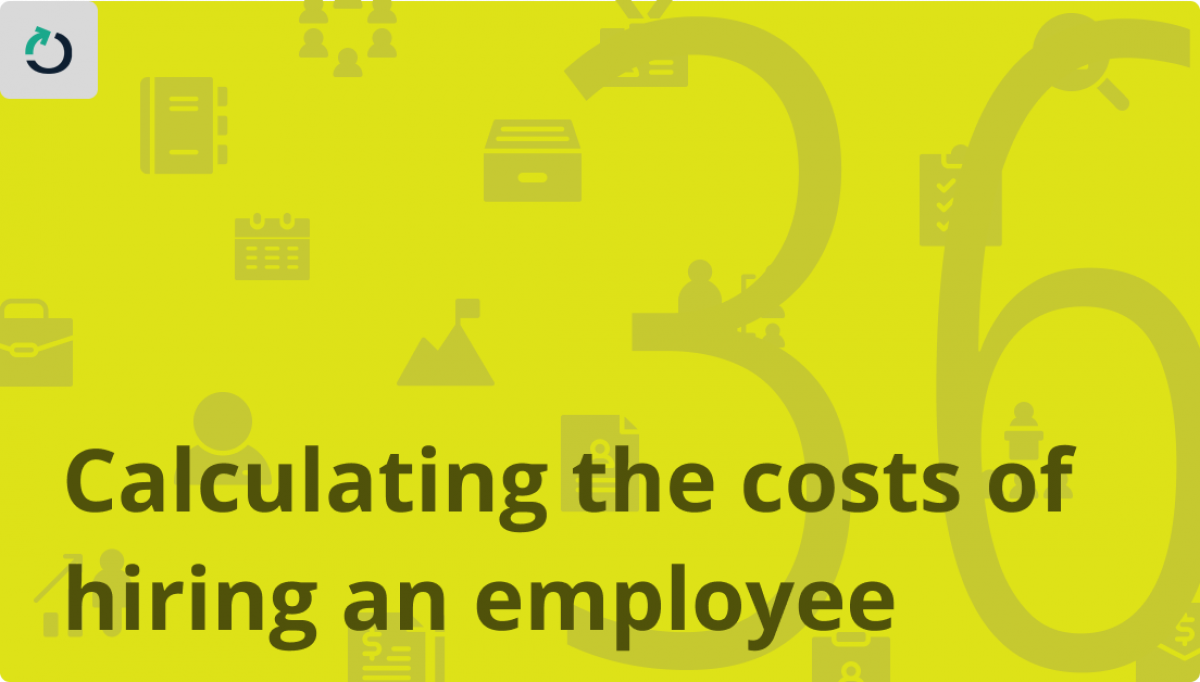When considering hiring a new employee, it's essential to calculate the costs associated with this decision. The prices of hiring an employee go far beyond their salary or an hourly wage. Various factors can contribute to the cost of hiring an employee, from benefits to taxes to training expenses. In this article, we'll discuss the steps to calculate the costs of hiring an employee and provide research to support our arguments.
Step 1: Determine the Employee's Salary
The first step in calculating the cost of hiring an employee is determining their salary or an hourly wage. This is typically the most obvious cost associated with hiring an employee. However, it is essential to consider the employee’s base salary and any additional compensation they may receive, such as bonuses or commissions.
According to data from the Bureau of Labor Statistics, the average hourly wage for private-sector workers in the United States was $31.68 as of August 2021. This equates to an annual average wage of $66,020. However, it's essential to remember that wages vary widely depending on the industry, job title, and location.
Step 2: Calculate Employee Benefits
Employee benefits can make up a significant portion of the cost of hiring an employee. These benefits may include health insurance, retirement plans, paid time off, and more. According to the Bureau of Labor Statistics, employers spent an average of $12.27 per hour working on employee benefits in March 2021.
Research has shown that offering benefits can help attract and retain employees. A Society for Human Resource Management study found that 92% of employees considered benefits important when choosing a job. In addition, offering benefits can improve employee morale and productivity.
Step 3: Consider Payroll Taxes
Employers are responsible for paying various payroll taxes, including Social Security and Medicare taxes, federal and state unemployment taxes, and more. These taxes can add up quickly and should be factored into the cost of hiring an employee.
According to the National Conference of State Legislatures data, the average state unemployment tax rate was 2.31% as of January 2021. In addition, employers must pay a 6.2% Social Security tax and a 1.45% Medicare tax on all employee wages. However, employers may also be eligible for certain tax credits, such as the Work Opportunity Tax Credit, which can help offset some of these costs.
Step 4: Account for Training and Onboarding Expenses
Training and onboarding expenses often need to be considered when hiring a new employee. These expenses may include the cost of training materials, the time spent by current employees training the new hire, and any external training or certification programs.
According to the Society for Human Resource Management research, a new employee’s average cost per hire is $4,425. This includes expenses related to recruiting, interviewing, and onboarding. In addition, the study found that it takes an average of 42 days to fill a job opening, which can result in lost productivity and revenue.
Step 5: Consider Other Costs
Other costs may be associated with hiring an employee that should also be considered. For example, if the employee is working remotely, there may be additional expenses for equipment or software. In addition, there may be costs associated with conducting background checks or drug tests.
According to a survey by SHRM, 69% of organizations conduct criminal background checks on all job candidates, and 47% conduct drug tests. The cost of these screenings can vary widely depending on the type and scope of the tests.
Sample calculation
Here is a sample calculation of hiring costs for a data analyst
Salary: $75,000 per year
Benefits: Based on the Society for Human Resource Management's 2020 Employee Benefits Report, the average cost of benefits is approximately 31% of an employee's salary. Therefore, the benefits cost for the data analyst would be $23,250 per year.
Payroll taxes: According to the Internal Revenue Service, the employer's share of payroll taxes is 7.65% of an employee's wages. Therefore, the payroll taxes for the data analyst would be $5,737.50 per year.
Training expenses: The cost of training can vary widely depending on the organization and the employee's needs. For the of this example, we will assume that the data analyst will require approximately $2,000 in training expenses per year.
Recruiting costs: The cost of recruiting can also vary widely depending on the organization and the recruiting methods used. For the purposes of this example, we will assume that the recruiting costs for the data analyst will be approximately $1,500.
Total cost:
Salary: $75,000
Benefits: $23,250
Payroll taxes: $5,737.50
Training expenses: $2,000
Recruiting costs: $1,500
Other costs: $3500
Total cost of hiring a data analyst: $110,987.50 per year
It's important to note that this is just a sample calculation, and the actual cost of hiring a data analyst can vary depending on a number of factors. However, this calculation can provide a useful starting point for estimating the costs associated with hiring an employee.
Conclusion
Calculating the costs of hiring an employee can be a complex process, but it's essential to consider all factors to make informed decisions. Following the steps outlined in this article, you can better understand the cost of hiring an employee.
It's important to note that while hiring an employee can add up quickly, investing in your employees can significantly benefit your organization. Research has shown that offering competitive salaries and benefits can help attract and retain top talent, improving productivity and profitability.
In addition, providing training and development opportunities can help employees grow and improve their skills, leading to greater job satisfaction and engagement.
When considering the costs of hiring an employee, it's also essential to consider the potential return on investment. By hiring the right employee and providing them with the support they need to succeed, you can create a positive and productive work environment that benefits both the employee and the organization.
In conclusion, calculating the costs of hiring an employee is an integral part of the hiring process. By considering salary, benefits, payroll taxes, training expenses, and other fees, you can better understand the cost of hiring an employee. Investing in your employees and creating a positive work environment can improve productivity, retention, and overall organizational success. Especially now that you know that costs of hiring an employee are much more than just the salary, wouldn’t it be unwise to spend just a little bit more on pre-hiring assessment tools like Merreo, to make your process that much more effective.
References:
Bureau of Labor Statistics. (2021). National Compensation Survey: Employee Benefits in the United States, March 2021. Retrieved from https://www.bls.gov/ncs/ebs/benefits/2021/
Bureau of Labor Statistics. (2021). Employment Situation Summary. Retrieved from https://www.bls.gov/news.release/empsit.nr0.htm
National Conference of State Legislatures. (2021). Unemployment Insurance. Retrieved from https://www.ncsl.org/research/labor-and-employment/unemployment-insurance.aspx
Society for Human Resource Management. (2020). 2020 Human Capital Benchmarking Report. Retrieved from https://www.shrm.org/hr-today/trends-and-forecasting/research-and-surveys/pages/2020-human-capital-benchmarking-report.aspx
Society for Human Resource Management. (2020). 2020 Employee Benefits Report. Retrieved from https://www.shrm.org/hr-today/trends-and-forecasting/research-and-surveys/pages/2020-employee-benefits.aspx
Society for Human Resource Management. (2020). 2020 Talent Acquisition Benchmarking Report. Retrieved from https://www.shrm.org/hr-today/trends-and-forecasting/research-and-surveys/pages/2020-talent-acquisition-benchmarking-report.aspx





